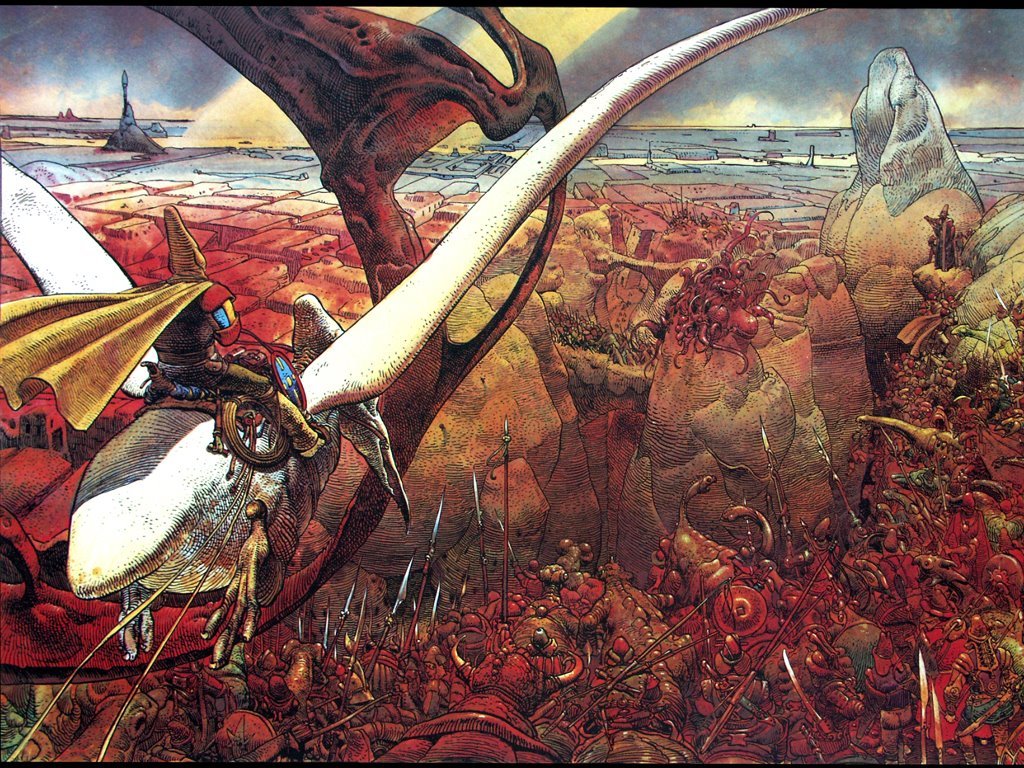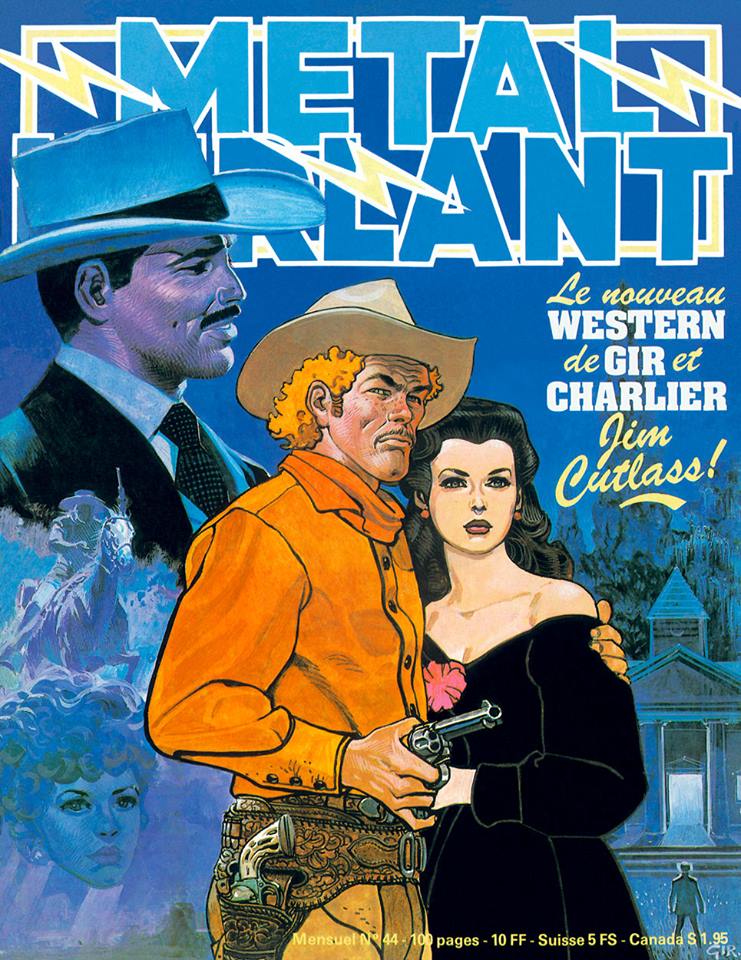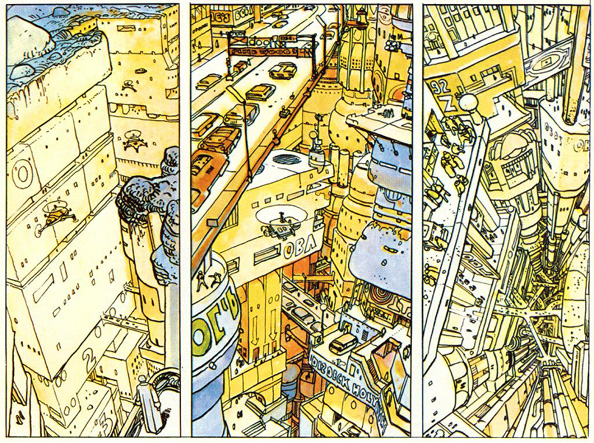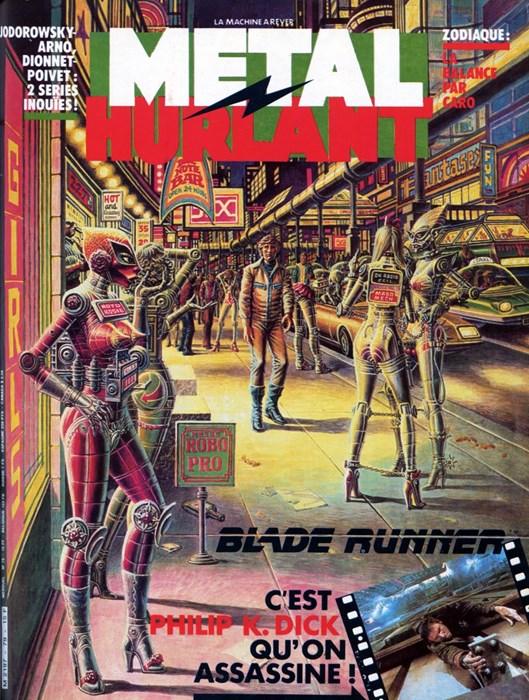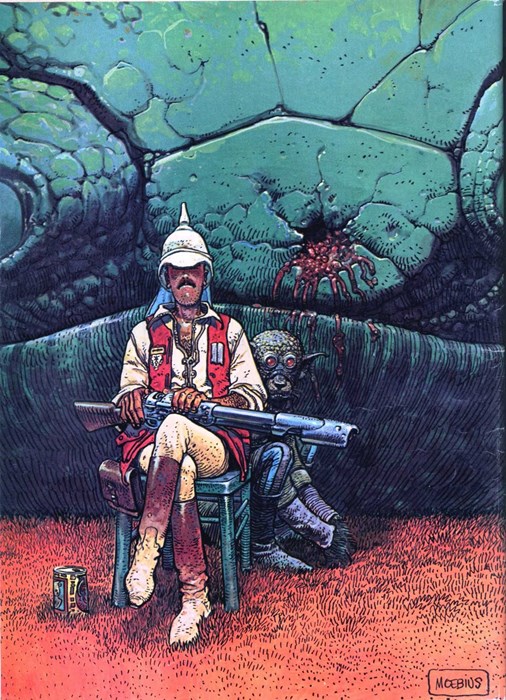[Most Recent Entries] [Calendar View]
Tuesday, August 1st, 2017
| Time | Event |
| 11:00a | 14 Self-Portraits Show the Evolution of Pablo Picasso’s Style: See Self-Portraits Moving from Ages 15 Through 90
It’s possible to look at Pablo Picasso’s many formal experiments and periodic shifts of style as a kind of self-portraiture, an exercise in shifting consciousness and trying on of new aesthetic identities. The Spanish modernist made a career of sweeping dramatic gestures, announcements to the world that he was going to be a different kind of artist now, and everyone had better catch up. Even in his most abstract periods, his work radiated with an emotional energy as outsized as the man himself.
Picasso’s animus and vitality even permeate his least inviting painting, Les Demoiselles d’Avignon (click here to view), a brothel scene with five geometrical women, two with African and Iberian masks; “a painting of nudes in which there is scarcely a curve to be seen,” writes The Guardian’s Jonathan Jones, “elbows sharp as knives, hips and waists geometrical silhouettes, triangle breasts.” The 1907 self-portrait of Picasso at age 25 (below) comes from this period, when the artist began his radical Cubist break with everything that had gone before.
An older version Les Demoiselles d’Avignon contained a male figure, “a stand-in for the painter himself.” Even when he did not appear, at least not in a final version, in his own work, Picasso saw himself there: his moods, his heightened perceptions of reality as he imagined it. The somber Blue Period paintings, with their moodiness and “themes of poverty, loneliness, and despair,” correspond with his mourning over the suicide of a friend, Catalan artist Carlos Casagemas. The Picasso in the 1901 portrait further up looks gaunt, broken, decades older than his 20 years. In the 1917 drawing further down, however, the artist at 35 looks out at us with a haughty, smooth-cheeked youthful gaze.
During this time, as World War I ended, he had begun to design sets for Diaghilev’s famed Ballet Russes, where he met his wife, ballerina Olga Khokhlova, and moved in comfortable circles, though he was himself desperate for money. Each portrait delivers us a different Picasso, as he sheds one mask and puts on another. Tracing his creative evolution through his portraiture means never moving in a straight line. But we do see his demeanor soften and round progressively over time in his portraits. He seems to grow younger as he ages.
The severe youth of 15, further up, brooding, world-weary, and already an accomplished draughtsman and painter; the grimly serious romantic at 18, above—these Picassos give way to the wide-eyed maturity of the artist at 56 in 1938, at 83, 89, and 90, in 1972, the year before his death. That year he produced an intriguing series of eclectic self-portraits unlike anything he had done before. See these and many others throughout his life below.
via Bored Panda/Twisted Sifter Related Content: How To Understand a Picasso Painting: A Video Primer The Gestapo Points to Guernica and Asks Picasso, “Did You Do This?;” Picasso Replies “No, You Did!” The Genius of Albrecht Dürer Revealed in Four Self-Portraits Josh Jones is a writer and musician based in Durham, NC. Follow him at @jdmagness
14 Self-Portraits Show the Evolution of Pablo Picasso’s Style: See Self-Portraits Moving from Ages 15 Through 90 is a post from: Open Culture. Follow us on Facebook, Twitter, and Google Plus, or get our Daily Email. And don't miss our big collections of Free Online Courses, Free Online Movies, Free eBooks, Free Audio Books, Free Foreign Language Lessons, and MOOCs. |
| 2:00p | Métal hurlant: The Hugely Influential French Comic Magazine That Put Moebius on the Map & Changed Sci-Fi Forever
Would you believe that one particular publication inspired a range of visionary creators including Ridley Scott, George Lucas, Luc Besson, William Gibson, and Hayao Miyazaki? Moreover, would you believe that it was French, from the 1970s, and a comic book? Not that that term "comic book" does justice to Métal hurlant, which during its initial run from 1974 to 1987 not only redefined the possibilities of the medium and greatly widened the imaginative possibilities of science fiction storytelling, but brought to prominence a number of wholly unconventional and highly influential artists, chief among them Jean Giraud, best known as Moebius.
Métal hurlant, according to Tom Lennon in his history of the magazine, launched "as the flagship title of Les Humanoïdes Associés, a French publishing venture set up by Euro comic veterans Moebius, Druillet and Jean-Pierre Dionnet, together with their finance director Bernard Farkas. Influenced by both the American underground comix scene of the 1960s and the political and cultural upheavals of that decade, their goal was bold and grandiose: they were going to kick ass, take names, and make people take comics seriously." This demanded "artistic innovation at every level," from high-quality, large-format paper stock to risk-taking storytelling "shot through with a rich vein of humour and delivered with a narrative sophistication previously unseen in the medium."
Giraud took to the possibilities of the new publication with a special avidness. Under the pen name "Gir," writes Lennon, he "was best known as the co-creator of the popular Western series, Blueberry. By the mid-1970s, Giraud was feeling increasingly constrained by the conventions of the western genre, so decided to revive a long-dormant pseudonym to embark on more experimental work. As ‘Moebius’, Giraud not only worked in a different genre to ‘Gir’ – a deeply personal, highly idiosyncratic form of science fiction and fantasy – but his art looked like it was drawn by a completely different person," and "unlike anything that had been seen in comics — or, for that matter, in any other medium."
Métal hurlant saw the debuts of two of Moebius’ best-known characters: the pith-helmeted and mustachioed protector of miniature universes Major Grubert and the silent, pterodactyl-riding explorer Arzach, who bears a certain resemblance to the protagonist of Miyazaki's 1984 film Nausicaä of the Valley of the Wind. Read through the back issues of the magazine — or its 40-years-running American version, Heavy Metal — and you'll also glimpse, in the work of Moebius and others, elements that would later find their way into the worlds of Neuromancer, Mad Max, Alien, Blade Runner, Star Wars, and much more besides.
“A while ago, SF was filled with monstrous rocket ships and planets,” said Moebius in 1980. "It was a naive and materialistic vision, which confused external space with internal space, which saw the future as an extrapolation of the present. It was a victim of an illusion of a technological sort, of a progression without stopping towards a consummation of energy." He and Métal hurlant did more than their part to transform and enrich that vision, but plenty of old perceptions still remain for their countless artistic descendants to warp beyond recognition. Related Content: Mœbius & Jodorowsky’s Sci-Fi Masterpiece, The Incal, Brought to Life in a Tantalizing Animation Moebius’ Storyboards & Concept Art for Jodorowsky’s Dune The Inscrutable Imagination of the Late Comic Artist Mœbius Watch Moebius and Miyazaki, Two of the Most Imaginative Artists, in Conversation (2004) Based in Seoul, Colin Marshall writes and broadcasts on cities and culture. He’s at work on the book The Stateless City: a Walk through 21st-Century Los Angeles, the video series The City in Cinema, the crowdfunded journalism project Where Is the City of the Future?, and the Los Angeles Review of Books’ Korea Blog. Follow him on Twitter at @colinmarshall or on Facebook. Métal hurlant: The Hugely Influential French Comic Magazine That Put Moebius on the Map & Changed Sci-Fi Forever is a post from: Open Culture. Follow us on Facebook, Twitter, and Google Plus, or get our Daily Email. And don't miss our big collections of Free Online Courses, Free Online Movies, Free eBooks, Free Audio Books, Free Foreign Language Lessons, and MOOCs. |
| 5:09p | Graphic Shows the House Plants That Naturally Clean the Air in Your Home, According to a NASA Study This is a quick public service announcement. If you believe in science and facts, read on. Back in the 1980s, NASA published a research report called "Interior Landscape Plants for Indoor Air Pollution Abatement" that grappled with a particular problem: Many modern buildings (particularly office buildings) have become so well insulated and hermetically sealed that they allow for little "free air exchange." As a result, toxins build up in these buildings (for example, from the off gassing of furniture) and the inhabitants eventually pay a price. In response, NASA looked for natural ways to clean up these sealed spaces (like the International Space Station), particularly by availing themselves of the natural air filtering properties of everyday house plants:
You can read the rest of the study here. And, above, find a graphic (created by LovetheGarden) that visualizes the results of the NASA study, showing which particular plants will reduce air pollution in your office and home. For good measure, we've also added below a short video where researcher Kamal Meattle "shows how an arrangement of three common houseplants, used in specific spots in a home or office building, can result in measurably cleaner indoor air." Follow Open Culture on Facebook and Twitter and share intelligent media with your friends. Or better yet, sign up for our daily email and get a daily dose of Open Culture in your inbox. If you'd like to support Open Culture and our mission, please consider making a donation to our site. It's hard to rely 100% on ads, and your contributions will help us provide the best free cultural and educational materials. Related Content: Stream 18 Hours of Free Guided Meditations Graphic Shows the House Plants That Naturally Clean the Air in Your Home, According to a NASA Study is a post from: Open Culture. Follow us on Facebook, Twitter, and Google Plus, or get our Daily Email. And don't miss our big collections of Free Online Courses, Free Online Movies, Free eBooks, Free Audio Books, Free Foreign Language Lessons, and MOOCs. |
| 7:00p | What Makes John Bonham Such a Good Drummer? A New Video Essay Breaks Down His Inimitable Style A tongue-in-cheek essay in McSweeney’s, Michael Fowler’s “How to Play a John Bonham Drum Solo,” contains some of the finest descriptions I've read of Bonham’s thunderous playing. It all begins with the triplet, the “thump-pe-da, thump-pe-da, thump-pe-da” rhythm the Led Zeppelin drummer plays on every piece of the kit. Should you learn to play drums like Bonham, you’ll be able to start this “up like a motor,” on any drum, “with either hand or foot, and perform all over the drums, without throwing a stick or becoming entangled in your own limbs, except to be funny.” After Bonham “made the important discovery that all drumming is just triplets, or should be,” he then proceeded to play them while “flying around the kit with blinding speed, hitting every drum and cymbal in those negligible spaces” between the triplets, “jamming like hell inside those brief spaces” then “plunging the whole kit into dead silence.” Can you learn to do this? Maybe you'll want a less colorful, more programmatic guide. Bonham himself learned the technique from some of the most furious drummers in jazz, Gene Krupa and Buddy Rich, as the narrator explains in the video above, “What Makes John Bonham Such a Good Drummer?” We begin with those trademark triplets, then learn of another Bonham signature. While more straightforward drummers like The Stones’ Charlie Watts played strict 4/4 beats with metronomic precision, Bonham was often so far behind the beat it was as if he played his drum parts in an echo chamber, with a syncopated swing he took from funk. But the heart of Bonham’s distinctive drumming has to do with the unusual dynamic he had with Jimmy Page. Normally, a drummer will lock in with the bass player, providing a solid foundation for the guitars and vocals to stand on. But “the essence… of the whole Zeppelin thing,” says engineer Ron Nevison, “was John Bonham following the guitar. He would take the riff and he would make that his drum part.” We hear several driving examples of this, most notably “Immigrant Song,” above, where Page and Bonham follow each other, while John Paul Jones thunders below them. The result, and one crucial reason Bonham’s hands almost never stop flying around the kit, is that, like Page, he’s playing both rhythm and lead parts, sometimes both at once. Bonham sets out the scaffolding for Page’s complex phrasing, sometimes creating a push-pull effect that heightens a song’s tension at its core. We hear this in “Kashmir,” where Bonham plays a standard 4/4 beat while Page and the string section play in 3/4 time. These asynchronous passages can prove daunting for accomplished drummers. Bonham frequently pulled them off with the same kind of looseness and panache he brought to all of his playing, with no shortage of triplets and Gene Krupa-like fills thrown in for good measure. Related Content: John Bonham’s Isolated Drum Track For Led Zeppelin’s ‘Fool in the Rain’ Isolated Drum Tracks From Six of Rock’s Greatest: Bonham, Moon, Peart, Copeland, Grohl & Starr Jimmy Page Tells the Story of “Kashmir” Josh Jones is a writer and musician based in Durham, NC. Follow him at @jdmagness What Makes John Bonham Such a Good Drummer? A New Video Essay Breaks Down His Inimitable Style is a post from: Open Culture. Follow us on Facebook, Twitter, and Google Plus, or get our Daily Email. And don't miss our big collections of Free Online Courses, Free Online Movies, Free eBooks, Free Audio Books, Free Foreign Language Lessons, and MOOCs. |
| << Previous Day |
2017/08/01 [Calendar] |
Next Day >> |














